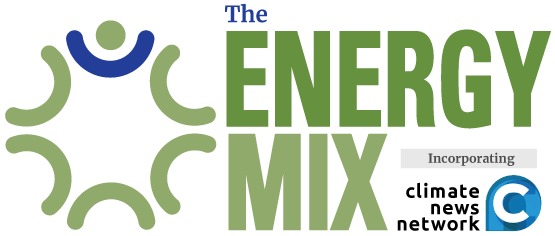“A broad coalition of Texas stakeholders”—including oil and gas producers, power operators and some large-load customers—said the bills “could have dramatically reduced investment in the state’s rapidly growing power system,” Utility Dive reported. Instead of aligning with the Trump Administration—its favourite term for enforcing compliance with MAGA policies—Texas lawmakers instead voted “yes” for renewables—for now. That’s money talking.
The World’s Second Biggest Oil Producer Goes Solar
Saudi Arabia, the world’s second biggest oil producer, has inked plans to more than triple solar capacity from 2023 levels, commissioning five enormous solar plants in 2024 and awarding contracts for five more plants, to meet its goal of sourcing half its power from clean energy by 2030. Its target of 130 gigawatts of new renewables capacity is part of the country’s long-term economic modernization plan for new tourism, factories, and AI data centers, with far-reaching implications for global geopolitics and energy markets.
“Today, solar is the cheapest, the fastest, the simplest, and the most secure source of energy that you can install,” said Marco Arcelli, chief executive of ACWA Power, the company managing the revision of Saudi Arabia’s power grid. Developing renewable energy also frees up oil that can be sold in international markets.
The 90% drop in solar and battery costs, and 70% drop in wind costs, over the past decade continue driving these shifts, in spite of the Trump Administration’s resistance. Since the start of this year, prices for Chinese polysilicon, the building block of solar panels, are down 50% and for panels, down 40%. A recent price rise of 5%, prompted by the government’s worry about a glut, still leaves pricing for solar components—wafers, cells, and panels—well below that of the boilers, turbines, and generators required for fossil fuel power plants, let alone expensive nuclear and hydrogen. When you include the engineering expertise required to build and operate fossil fuel facilities, the bottom-line favors renewables, even in an oil giant such as Saudi Arabia.
Ethiopia Chooses Hydropower
Then there’s Ethiopia. The strategically located but impoverished country has banned imports of combustion engine cars in a drive to electrify transportation for both economic and environmental reasons. Importing fossil fuels costs Ethiopia $4.5 billion annually, and the price of gas has doubled in the past three years, while clean hydropower provides 96% of the country’s electricity.
How will this work in a country where today, one-half of its 126 million population has no access to electricity, and where power outages are frequent? One answer is the recently opened Ethiopian Grand Renaissance Dam, which will double current electricity output.
“We have massive potential in renewables,” Bareo Hassen, state minister for transport told The Guardian. He says the decision to ban imports of diesel and petrol vehicles is part of Ethiopia’s push to promote a green economy and reduce the pollution that chokes the capital during rush hour. The transport ministry wants to more than quadruple the number of EVs. That number is targeted to increase to 500,000 by 2030.
Global Renewables Investment Accelerates
These developments are taking place in an ongoing, world-wide movement to invest in clean energy. Since January, $470 billion in clean energy finance has been announced, Zero Carbon Analytics reports. Finance for onshore and offshore wind increased about 25% in the first half of 2025, topping $168 billion. “The sector still has momentum and underlying strength,” analyst Joanne Bentley-McKune said.
Even the U.S., where renewables are being punished by the Trump Administration, is seeing new records for renewables. The first half of 2025 saw 63 clean energy deals in the US worth $34 billion, versus 57 deals worth about $7 billion in the second half of 2024, KPMG reported. US developers say half of new electric capacity this year will come from solar. Over 25% of U.S. power generation in June was green, according to the U.S. Energy Information Administration. That’s an increase from 18% in the same time period last year.
The Time to Act Is Now
“Rapid data center growth, a rebounding American industrial sector and residential electrification are all increasing demand for electricity at a rate not seen for decades,” the World Resources Institute reports. Heatwaves, the building of power-hungry AI data centers, and growing numbers of EVs are driving demand for more capacity in power generation. The national five-year forecast for electricity load was 5 times higher in 2024 than 2022 predictions.
Related Story: World on Track to Add 57 Superhot Days a Year, But It Could Have Been Worse
“If left unaddressed, this new demand spike could increase greenhouse gas emissions, inflate consumers’ bills and make the U.S. grid less reliable,” WRI said. “Acting quickly is imperative,”—as fossil fuel-rich Texas, Saudi Arabia and Ethiopia are demonstrating.
This post was originally published by Climate & Capital Media and is republished with permission.
John Howell is Climate & Capital’s finance editor. He has 40 years of journalism and business experience at outlets including 3BL Media, Elle, Artforum and Hearst Magazines.
Barclay Palmer is executive editor and strategy head at Climate & Capital. He is an award-winning journalist, producer, and executive with experience at CNN, CBS, Bloomberg, Reuters and Newsweek.


